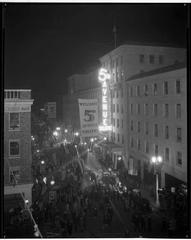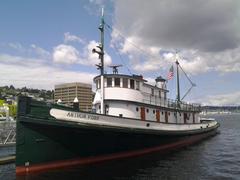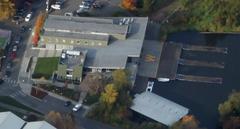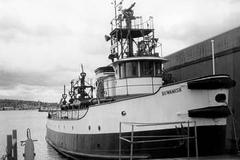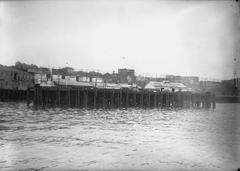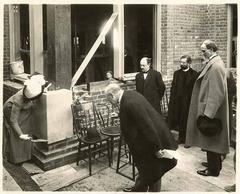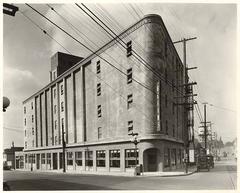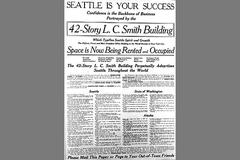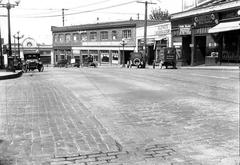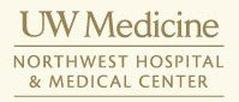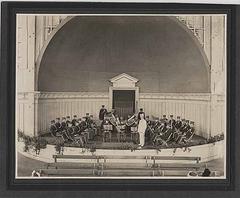
Living Computers Museum Seattle: Visiting Hours, Tickets, and Guide to Historical Tech Exhibits
Date: 03/07/2025
Introduction
The Living Computers: Museum + Labs (LCM+L) was a groundbreaking technology museum located in Seattle’s SoDo district. Established in 2012 by Microsoft co-founder Paul G. Allen, LCM+L became internationally recognized for its operational preservation philosophy—making vintage computers, mainframes, and emerging technologies accessible and interactive for all ages. Unlike static museums, LCM+L’s hands-on approach allowed visitors to experience legendary machines such as the DEC PDP-10, IBM System/360, Apple I, and Cray supercomputers in action. The museum served as a vital educational hub, engaging the community through workshops, classes, and special events that promoted digital literacy and innovation. Although LCM+L permanently closed in June 2024 due to pandemic-related challenges, its impact endures through the redistribution of its collection to institutions like the Computer Museum of America and ongoing digital experiences via online emulators. This guide presents a comprehensive overview of LCM+L’s history, visitor information, exhibit highlights, educational legacy, and how its influence continues to shape computing culture.
Table of Contents
- Introduction
- History and Founding Vision
- Visiting Hours and Tickets (Historical)
- Location, Accessibility, and Nearby Attractions
- Exhibit Highlights and Interactive Experiences
- Educational Programs and Community Impact
- Preservation Philosophy and Technical Challenges
- The Museum’s Closure and Legacy
- Dispersal and Digital Preservation of the Collection
- Frequently Asked Questions (FAQs)
- Conclusion and Visitor Tips
- References
History and Founding Vision
Paul Allen’s vision for LCM+L was to create a “living” museum dedicated not just to displaying, but also to operating and preserving the history of computing. Built upon Allen’s personal collection, the museum showcased operational mainframes, minicomputers, microcomputers, and early networking equipment, offering visitors a tactile understanding of technological progress. Allen’s lifelong passion for technology and education fueled LCM+L’s mission to demystify computers, inspire curiosity, and make technology accessible for all (magazine.washington.edu).
Visiting Hours and Tickets (Historical)
Visiting Hours:
Prior to its closure, LCM+L was open to the public Tuesday through Sunday, 10:00 AM to 5:00 PM, with last admission at 4:00 PM. The museum was closed on Mondays and major holidays.
Ticket Information:
Admission ranged from $12 for adults to discounted rates for students, seniors, children, and groups. Tickets were available online and at the museum entrance. Special rates applied for school programs, workshops, and group visits. Advance booking was recommended, especially for educational events and guided tours (mainlymuseums.com).
Location, Accessibility, and Nearby Attractions
Address: 2245 First Avenue South, Seattle, WA 98134
LCM+L was easily accessible by public transit (including King Street Station and local bus routes) and offered limited free parking. The museum was fully wheelchair accessible, with elevators, ramps, and trained staff to assist visitors with disabilities.
Nearby Seattle Historical Sites:
- Museum of History & Industry (MOHAI)
- Museum of Pop Culture (MoPOP)
- Pike Place Market
- Space Needle
- Microsoft Visitor Center (Redmond)
LCM+L’s SoDo location made it an ideal starting point for exploring Seattle’s rich technology and cultural heritage.
Exhibit Highlights and Interactive Experiences
LCM+L’s exhibits spanned 30,000 square feet and were organized by era and theme:
Vintage Mainframes and Microcomputers
- Mainframes: DEC PDP-10, PDP-11, IBM System/360, VAX systems, and Cray-1/Cray-2 supercomputers.
- Microcomputers: Apple I & II, Commodore 64, Altair 8800, Amiga, and early IBM PCs.
- Networking: ARPANET terminals, early modems, and World Wide Web origins.
Robotics, AI, and Emerging Technologies
- Hands-on Labs: Coding workshops, robotics demos, AI experiments, and VR/AR experiences.
- Telepresence Robots: Visitors could control robots and explore machine learning basics.
Interactive Software and Online Emulation
- Emulators: Access to classic computer operating systems via the museum’s website and, post-closure, through SDF.org.
Special Events and Guided Tours
- Coding competitions, guest lectures, and themed exhibitions for all ages.
- Guided tours available upon request for deeper insight into the collection.
Educational Programs and Community Impact
LCM+L played a central role in Seattle’s tech education landscape:
- School Visits & STEAM Programs: Curriculum-aligned tours and workshops for K–12 and higher education.
- Public Workshops: Topics included coding, robotics, digital art, and AI.
- Community Partnerships: Collaborations with schools, universities, and nonprofits to promote digital literacy.
- Diversity Initiatives: Coding camps for girls, mentorship programs, and scholarships aimed at underrepresented groups.
The museum’s focus on hands-on, inquiry-driven learning fostered creativity and critical thinking across generations (whichmuseum.com).
Preservation Philosophy and Technical Challenges
A hallmark of LCM+L was its commitment to operational preservation—restoring and maintaining historic computers in working order. This required:
- Custom-fabricated hardware components and reverse-engineered software.
- Technical teams dedicated to restoration, maintenance, and documentation.
- Development of online emulation and remote access systems, democratizing access to computing history worldwide (gunkies.org).
The Museum’s Closure and Legacy
LCM+L closed to the public in March 2020 due to the COVID-19 pandemic and never reopened. The closure became permanent in June 2024, as confirmed by the Paul Allen estate (GeekWire, ExtremeTech). The estate cited pandemic-related impact and a desire to benefit charitable causes through the auctioning of the collection (Seattle Times).
The closure was met with sadness and frustration by the tech community, former visitors, and donors—many of whom hoped the museum’s mission could continue in Seattle. The dispersal of artifacts raised concerns about the long-term preservation and accessibility of historically significant items (I Programmer).
Dispersal and Digital Preservation of the Collection
Auctions and Notable Artifacts
Many rare and historically significant pieces—including the DEC PDP-10: KI-10, Apple I, and a letter from Albert Einstein to President Truman—were auctioned, with proceeds benefiting charitable organizations (ExtremeTech, Seattle Today).
Transfer to the Computer Museum of America
In September 2024, the remaining collection—including thousands of artifacts, systems, and educational resources—was transferred to the Computer Museum of America (CMoA) in Roswell, Georgia (GeekWire). CMoA plans to integrate and display much of the LCM+L collection, continuing Allen’s legacy for future generations.
Digital and Remote Access
LCM+L’s online system for interacting with historic computers was transferred to SDF.org, ensuring the museum’s operational spirit remains accessible to a global audience.
Frequently Asked Questions (FAQs)
Q: What were the Living Computers Museum’s visiting hours?
A: Before closing, LCM+L was open Tuesday–Sunday, 10:00 AM–5:00 PM.
Q: How could visitors purchase tickets?
A: Tickets were available online and at the museum entrance, with discounts for students, seniors, children, and groups.
Q: Was the museum accessible to those with disabilities?
A: Yes, the museum was fully wheelchair accessible and offered accommodations for visitors with diverse needs.
Q: Where can I experience LCM+L’s collection now?
A: Artifacts are being displayed at the Computer Museum of America in Roswell, GA, and online via SDF.org.
Q: What other Seattle attractions are recommended for tech/history enthusiasts?
A: MOHAI, MoPOP, Pike Place Market, the Space Needle, and the Microsoft Visitor Center in Redmond.
Conclusion and Visitor Tips
The Living Computers: Museum + Labs stood out as a beacon of interactive learning, operational preservation, and community engagement in the heart of Seattle’s tech scene. Its legacy continues through the Computer Museum of America, digital platforms, and the ongoing inspiration it provides to technology enthusiasts, educators, and innovators. Although its doors are now closed, LCM+L’s pioneering spirit lives on in the accessibility of its collection, the impact of its educational programs, and the vibrant technology culture it helped foster.
Visitor Tips:
- Explore the Computer Museum of America to see LCM+L artifacts.
- Experience online emulators at SDF.org for remote interaction with vintage systems.
- Download the Audiala app for curated museum guides and virtual tours of Seattle’s technology attractions.
- Continue your exploration of Seattle’s rich tech heritage at local museums and cultural sites.
References
- The Register
- Gunkies Wiki
- WhichMuseum
- GeekWire
- ExtremeTech
- CMoA
- Seattle Today
- mainlymuseums.com
- magazine.washington.edu
- Wikipedia
- Neowin
- Seattle Times
- I Programmer

